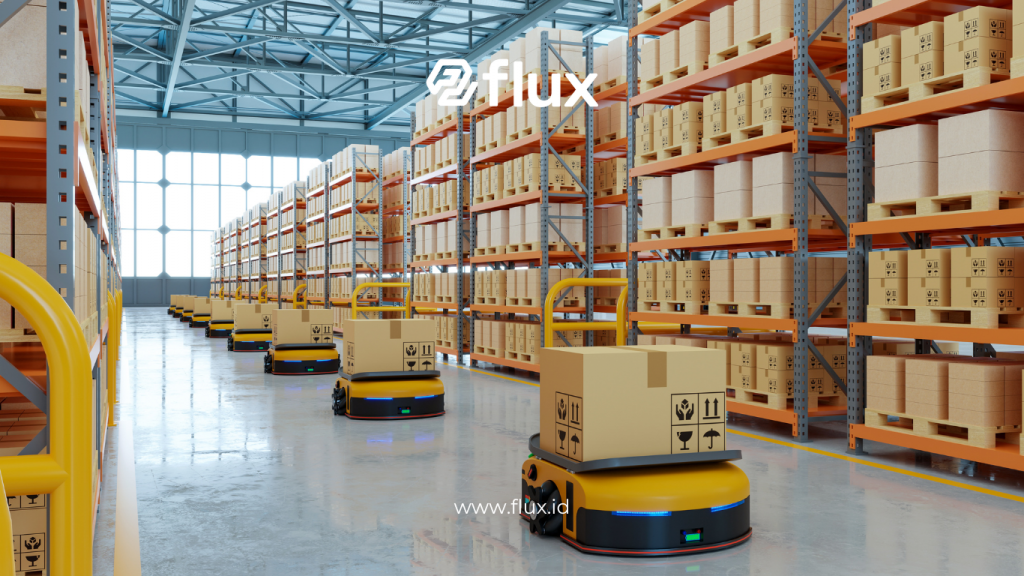Don't miss our holiday offer - 20% OFF!
The rise of Internet of Things (IoT) technology has created significant opportunities across various sectors, including logistics. By leveraging IoT, companies can optimize their supply chains, reduce operational costs, and enhance visibility through the use of connected sensors. In this article, we’ll explore how IoT enhances logistics efficiency and how it is applied within the shipping industry.
Contents
- 1 1. What is IoT and How Does it Play a Role in Logistics?
- 2 2. Benefits of IoT in Logistics
- 3 3. IoT Applications in Supply Chain Management
- 4 4. IoT in Shipping: Overcoming Challenges and Improving Performance
- 5 5. Challenges of Implementing IoT in Logistics
- 6 6. The Future of IoT in Logistics
- 7 Conclusion
1. What is IoT and How Does it Play a Role in Logistics?

Read More: The Vital Role of IoT in Industry 4.0 Revolution: An Irreplaceable Digital Transformation
IoT (Internet of Things) refers to a network of interconnected devices that communicate via the internet, allowing them to collect, share, and analyze data in real-time. In logistics, these devices include sensors, GPS systems, and RFID tags, which help monitor various aspects of the supply chain, such as the condition of goods, vehicle locations, and shipment statuses.
Through IoT, companies can automate and streamline their logistics operations. Connected sensors provide real-time data that enables continuous monitoring of the entire process, from storage and distribution to the final delivery of goods.
2. Benefits of IoT in Logistics

Read More: Enhancing Trade Department Efficiency with IoT Sensors
Implementing IoT technology in logistics offers several key benefits, including:
a. Real-Time Monitoring
IoT enables companies to track shipments in real time. Through connected sensors and GPS technology, logistics teams can monitor vehicle locations and the delivery status of goods. This allows for precise delivery time estimates, ensuring that customers are kept informed about when their orders will arrive.
b. Improved Operational Efficiency
By collecting data from connected devices, IoT allows logistics companies to identify inefficiencies and bottlenecks in their distribution processes. Analyzing this data can help optimize routes, reduce vehicle downtime, and improve fuel consumption, thereby enhancing overall operational efficiency.
c. Reduced Operational Costs
By improving monitoring and automating various processes, IoT helps logistics companies reduce costs. For instance, predictive maintenance—enabled by data from IoT sensors—can prevent expensive vehicle breakdowns before they occur.
d. Enhanced Security and Compliance
IoT sensors can also monitor important environmental conditions such as temperature, humidity, and vibration levels. This is crucial for products like food and pharmaceuticals that require specific storage and transportation conditions. By using IoT, companies can ensure that goods remain safe and compliant with regulatory standards throughout the journey.
3. IoT Applications in Supply Chain Management

Read More: Optimizing Energy Management with IoT Sensors: Efficient Electricity Consumption Monitoring Solution
IoT offers a wide range of applications that can significantly improve supply chain management. Some of the most valuable applications include:
a. Asset Tracking
By integrating GPS and RFID sensors, companies can track assets in warehouses and during transportation. This minimizes the risk of lost or misplaced goods while ensuring that every step in the supply chain is carefully documented.
b. Inventory Management
IoT enhances inventory management by providing real-time updates on stock levels. Connected sensors can alert companies when stock is running low, ensuring timely restocking and preventing stockouts.
c. Autonomous Vehicles
One of the most innovative applications of IoT in logistics is the use of autonomous vehicles, such as driverless trucks and delivery drones. These technologies enable faster, more efficient deliveries, especially in remote areas or along long-distance routes.
4. IoT in Shipping: Overcoming Challenges and Improving Performance

Read More: Optimize Your Financial Asset Management with RFID Card Sensor Technology: A Guide and Benefits
IoT not only helps logistics companies optimize the supply chain but also plays a pivotal role in improving the shipping and delivery process. Here’s how IoT addresses several key challenges in shipping:
a. Improving Last-Mile Delivery
The last mile of delivery often presents the most challenges due to factors like unpredictable traffic or varying delivery locations. IoT enhances last-mile delivery by providing better visibility into traffic conditions, vehicle availability, and route efficiency. As a result, logistics companies can create more optimized delivery routes, ensuring faster and more reliable service.
b. Monitoring Product Conditions
Temperature and humidity sensors are especially important for monitoring perishable products such as frozen foods or pharmaceutical goods. Through IoT, companies can continuously monitor product conditions throughout the delivery process, ensuring that they arrive in optimal condition.
c. Minimizing Vehicle Downtime
Delays due to vehicle breakdowns or malfunctions can be costly for logistics companies. However, IoT helps minimize downtime by enabling real-time monitoring of vehicle performance. The system provides early warnings when repairs or maintenance are necessary, allowing for proactive action.
5. Challenges of Implementing IoT in Logistics
Despite its numerous advantages, implementing IoT in logistics does come with its share of challenges. Some of the most common issues include:
a. Data Security
Since IoT devices rely on internet connectivity, there is always a risk of data breaches or hacking. Logistics companies must invest in strong cybersecurity measures to protect sensitive information from unauthorized access.
b. Implementation Costs
While IoT can lead to cost savings over time, the initial investment required for hardware, software, and system integration can be substantial. Smaller businesses, in particular, may find it challenging to cover these upfront costs.
c. Complexity in System Integration
Integrating a wide variety of IoT devices into a cohesive logistics management system can be complex. To ensure seamless implementation, companies need to adopt a systematic approach and invest in sufficient technical support.
6. The Future of IoT in Logistics

Read More: Integrating IoT in Business: Smart Solutions for Efficiency and Savings
As IoT technology continues to evolve, its impact on logistics will grow even more significant. Some of the key trends to watch for in the future include:
a. AI and Machine Learning Integration
When combined with artificial intelligence (AI) and machine learning, IoT can provide logistics companies with more sophisticated tools for predicting demand, optimizing route planning, and enhancing inventory management.
b. Blockchain for Greater Transparency
The integration of blockchain technology with IoT is expected to improve transparency in the supply chain. Blockchain allows for immutable record-keeping, enabling logistics companies to track the movement of goods with greater accuracy.
c. Electric and Autonomous Vehicles
As the logistics industry shifts toward more sustainable practices, the adoption of electric and autonomous vehicles is expected to increase. These IoT-connected vehicles will not only reduce carbon emissions but also make deliveries more efficient.
Conclusion
In conclusion, IoT is reshaping the logistics sector by optimizing supply chain and delivery operations. Through connected sensors and smart technologies, companies can improve visibility, enhance operational efficiency, and reduce costs. Although challenges such as data security and implementation costs remain, the future of IoT in logistics looks promising. With advancements in AI, blockchain, and autonomous vehicles, logistics companies can continue to innovate and provide better services to their customers. By embracing IoT, the logistics industry is poised for a more efficient and connected future.





